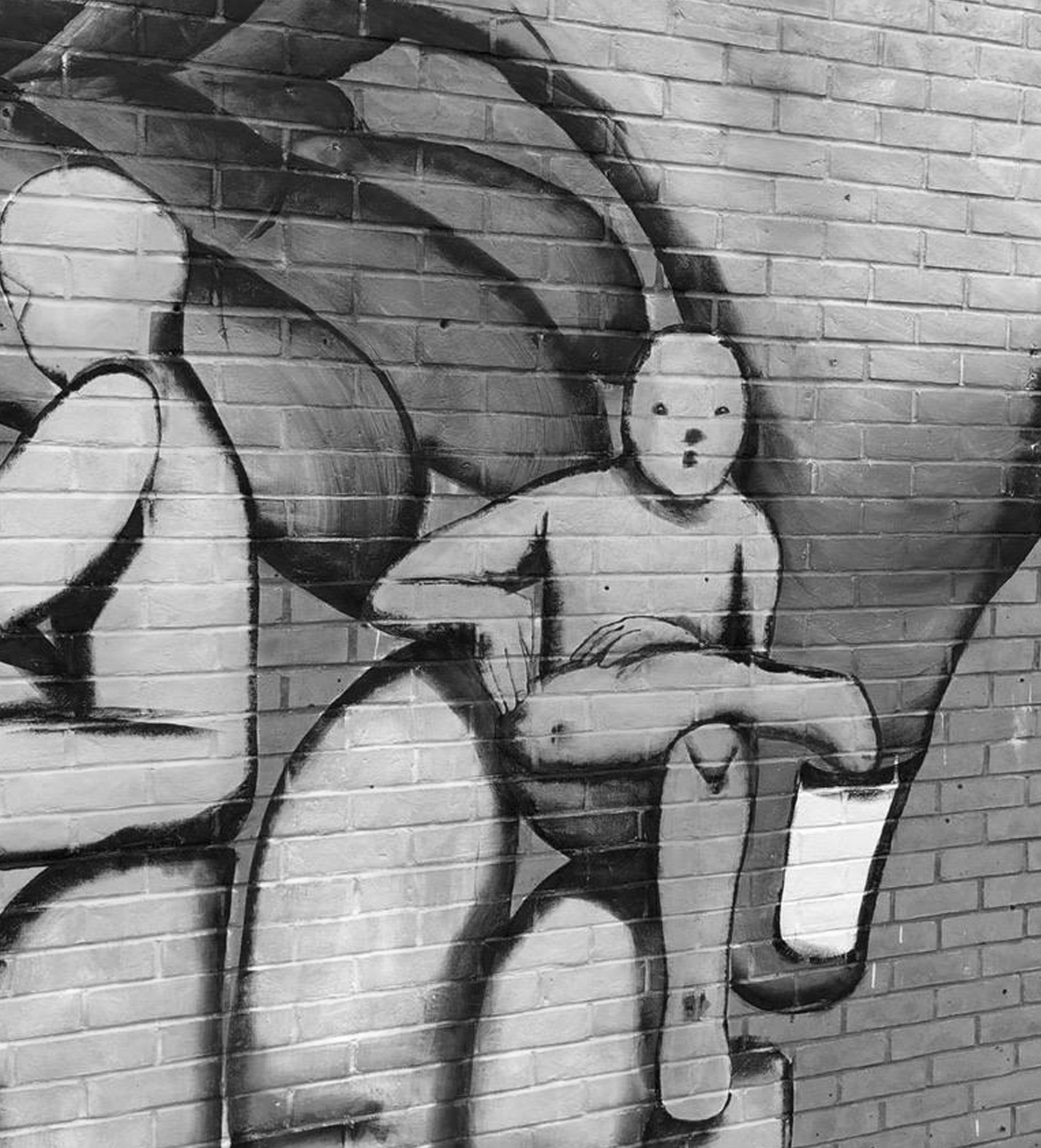Taking an Exhibition Outside

By David Evans, Exhibitions Manager, The Fitzwilliam Museum
Sometimes we bring a thing into the gallery to draw attention to it, or to give it greater attention. Recently we took some of the content out of the exhibition gallery to give it the higher profile gained by street art in public communal spaces.
Often exhibitions are an opportunity to move art works into a place where they can be seen by more people. Exhibitions can make an art work visible by changing its reference points and putting it in a new place with a different audience. In Cambridge we have the most incredible resource, in the New Hall Art Collection which is at Murray Edwards College, University of Cambridge. New Hall Art Collection, curated by the equally incredible Harriet Loffler, houses more than 500 works by artists who are women. The art works are received by donation, or by invitation. The history of the collection starts with Mary Kelly and Maggi Hambling, and moves to Lubaina Himid and Maud Sulter, Tracy Emin and Rose Wylie, France-Lise McGurn and Jo Spence. In The Human Touch we had the opportunity to show two works on loan from New Hall, by Alexis Hunter and Judy Chicago.

Artwork by RUN (Giacomo Bufarini)
Sometimes one needs to move the museum exhibition out of its gallery and to let it interact with the world directly. Our exhibition The Human Touch always had an element of graffiti in its object list, as an emblem of the way people are moved to overwrite their environment and leave marks on its surface. For most of the exhibition research phase this was simply a place-holder as we racked our brains for the most apposite and telling trace. We decided we wanted a commission. We wanted something colourful to preside over the gallery space. One day on leaving the design studio in Shoreditch we visited Columbia Road and went to see the lovely people at Nelly Duff Gallery, a contemporary gallery who work with artists to make print editions and site-specific art works.

Artwork by RUN (Giacomo Bufarini)
The conversation over the following weeks took us to another place, and the notion of wall paintings across Cambridge. Lockdown was preventing us from letting an audience into the exhibition, so we took a part of the exhibition outside into town. One public space that was opening earlier rather than later during the pandemic was the incredible Jesus Green Lido, the largest outdoor pool in Europe, which happens to have a long, low perimeter wall visible from the street and from the river as you approach Cambridge from the north. A natural partner for this location was the exterior wall of Parkside Pool at the town end of Mill Road, and visible from the road as you approach Cambridge from the east.

Artwork by RUN (Giacomo Bufarini)
The pandemic, and the lockdown which began in March 2020, pushed museums and galleries beyond their architectural parameters in order to reach an audience. We moved more whole-heartedly on-line and into the egalitarian realm of the virtual world. And we sought direct community engagement through public commissions and art works in locations less linked to the geographical confines of the museum. We are all hoping these moves continue to dismantle barriers, encourage people into the museum, and help take the museum out into a wider public space.
